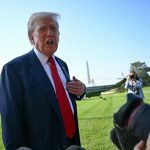The Rumbling Foundations of Global Markets
Yo, let’s talk about the global stock market—a beast that’s more unpredictable than a Philly construction site after a nor’easter. This ain’t just about numbers on a screen; it’s a high-stakes game where trade policies, especially those from the U.S., can send shockwaves through every sector. Remember the Trump era? Sheesh, those tariffs hit like a wrecking ball, leaving investors scrambling like they just got a 30% interest rate hike on their credit cards.
1. Tariffs: The Economic Wrecking Ball
When the U.S. slapped tariffs on imports, it wasn’t just a tax—it was a full-blown demolition job on global supply chains. Picture this: tariffs make foreign goods pricier, which *should* boost domestic production, right? But in reality, businesses got stuck with higher costs, consumers tightened their wallets, and the stock market? Pure chaos. The Dow Jones Industrial Average dropped like a load of steel beams—over 2,000 points in a single session after Trump cranked up tariffs on China. The S&P 500 and Nasdaq didn’t fare better, with the Nasdaq even diving into bear market territory.
2. Sector-Specific Carnage
Not all stocks got hit equally. Companies knee-deep in global operations, like Netflix and Disney, took a beating. Netflix’s stock tumbled 2% faster than a condemned building when tariffs were announced. Why? These giants rely on global markets for everything from production to subscribers. Disrupt trade, and their foundations start cracking. Meanwhile, industries like manufacturing and agriculture got caught in the crossfire, with China retaliating with a 34% levy on U.S. goods. Talk about a tit-for-tat that left markets worldwide in rubble.
3. Investor Sentiment: The Emotional Rollercoaster
Investors ain’t robots—they panic, they hope, and they react. Tariff announcements turned the market into a demolition derby, with wild swings in the Dow and S&P 500. One day, the Dow surges 600 points on rumors of a tariff truce; the next, it’s in freefall. Even the Fed started sweating, with analysts like Ed Yardeni slashing S&P 500 forecasts over recession fears. But here’s the kicker: the market’s got resilience. After every crash, there’s a rebound—like the S&P 500’s nine-day winning streak, the longest in 20 years.
The Aftermath: What’s Left Standing?
So, what’s the takeaway? Tariffs are a double-edged sledgehammer. Sure, they *might* protect some jobs, but they also jack up prices and rattle the global economy. The market’s proven it can adapt—but at what cost? As trade wars simmer, investors and policymakers better wear hard hats. One wrong move, and the next crash could be worse than a subprime mortgage meltdown. Stay sharp, folks. The only thing predictable here is volatility.





发表回复